Ever wonder what animals are up to when you’re in your house, during the day when you’re busy with your life or at night when you’re sleeping? Trail cameras are awesome tools for giving a sneak peak into the lives of many animals, including deer and I’m thrilled to say my cameras are back up and running after a long hiatus. Woo hoo! I always look forward to seeing what animals I’ve “caught.”
Unlike some other mammals that may make their way into our neighborhoods and yards, deer are one of those animals that most people recognize and know a few things about. But like everything out there it seems there is always more to learn. In addition to a short 6 minute video featuring a sneak peak into the lives of some white-tailed deer using trail cam footage as well as live video, I’ve created a list of a 6 things that might surprise you about these very common mammals.
6 Things That Might Surprise You About White-Tailed Deer:
- Did you know a male deer grows new antlers every spring? They do and it’s amazing to consider how quickly they grow, going from nothing to 6 or 8 points in just the span of a few months. Antlers are of course made of bone and they are one of the fastest growing tissues of any animal, growing as much as a quarter-inch per day. (Horns on the other hand are not shed, remaining on an animal throughout its lifetime) Males will shed the antlers throughout the winter, losing them as unceremoniously as a leaf falling from a tree. Once on the ground the antlers provide nourishment for many animals including mice, squirrels, chipmunks, rabbits, opossums, raccoons, coyotes, and dogs.
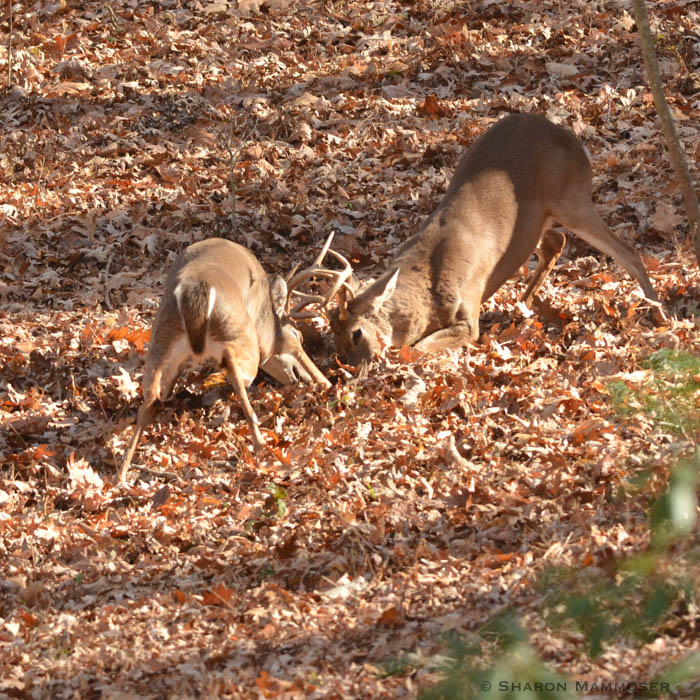
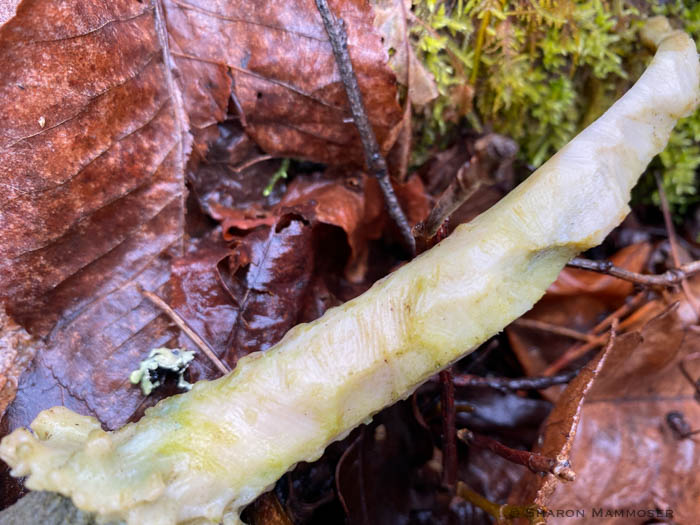
2. Did you know you cannot determine a buck’s age by its antlers? This is a widely accepted myth that often makes its rounds on social media. Looking at the size of a male’s rack will not tell you his age as many factors influence the size of the antlers, including nutrition and genetics.
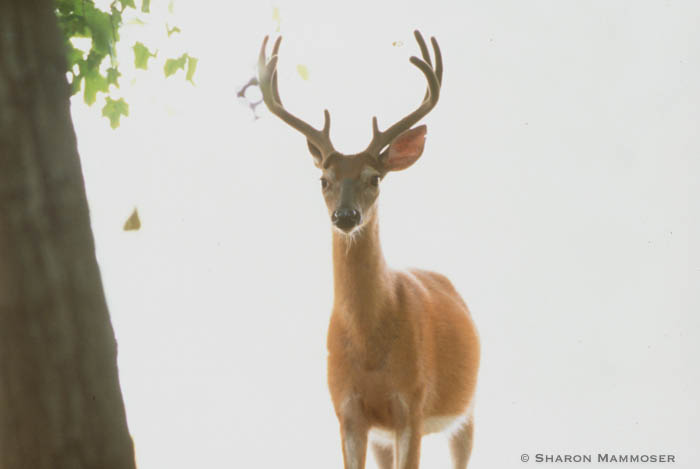
3. Did you know mother deer leave their fawns unattended during the first weeks of their lives? Sometimes people find what appear to be orphaned deer and bring them to wildlife rescue centers, but young deer that appear to be abandoned are almost always well-cared for by their mothers, who simply leave them in a safe place while they go off to feed. But they keep a close watch on them and will return several times a day to nurse. Leaving the fawns alone is a strategy the deer use to protect the fawns, who have excellent camouflage. Young fawns tend to stay where their mother put them, remaining hidden on the forest floor as long as they don’t move. If you ever find what looks like an abandoned fawn, Please, please, please, just leave it there!!
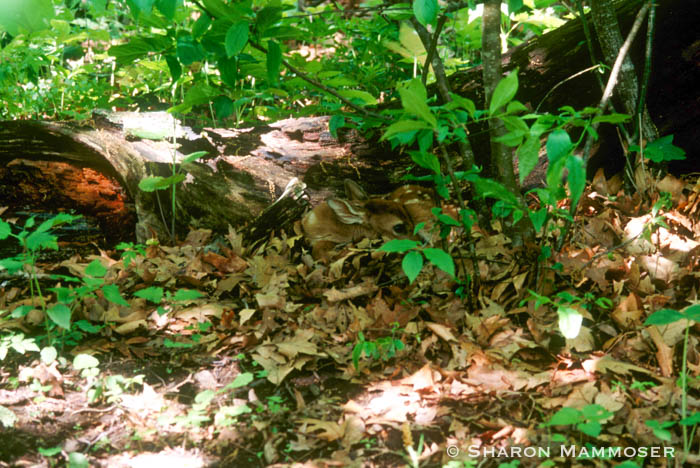
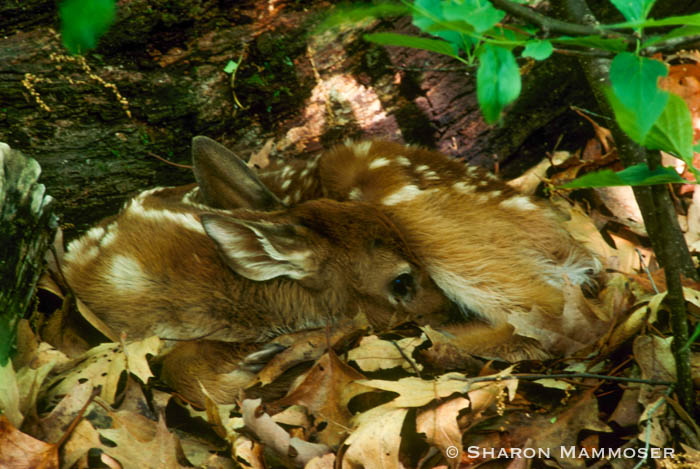
4. A doe’s milk is richer than cow’s milk, allowing fawns to grow rapidly. According to Warner Shedd in his book, “Owls Aren’t Wise and Bats Aren’t Blind,” Within a month, fawns have already tripled their birth weight and are also eating plant materials. After roughly two and a half months they can survive without their mother’s milk, although they’ll continue to nurse less frequently for another two or three months.”
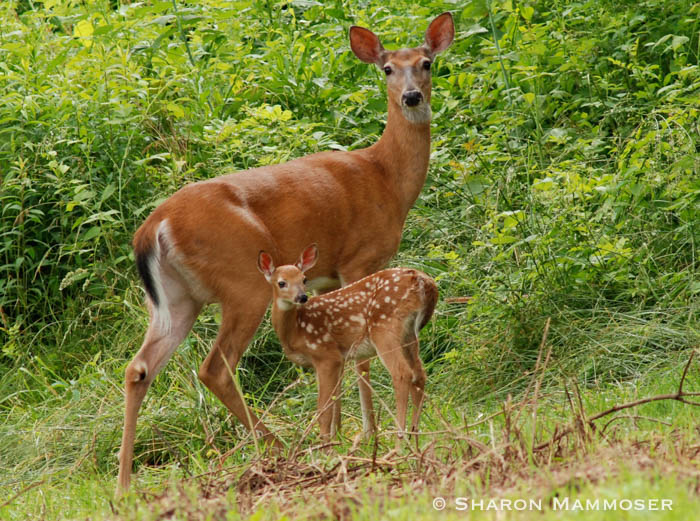
5. Just as birds molt and change out their feathers, so do deer change their coats. If you think about it, it makes sense, as it’s like when winter approaches you get your warm gear out–hats, winter jackets, mittens, etc. They do this gradually, in the spring and then again in the fall, giving the deer during this time a generally unkempt appearance. Rest assured, they are probably just getting their new summer coat, or in the fall, their new winter coat.
6. Amazingly, deer in the wild have an average life span of just two years! Their natural enemies include coyotes, wolves (out west), bobcats, lynx and black bears. According to Paul Rezendes in his book Tracking and the Art of Seeing, “human hunters account for an average of two million deer deaths every year.” Motor Vehicles also account for many deer fatalities–1.5 MILLION accidents in just the United States each year. Unleashed dogs free to roam also can take a heavy toll on deer populations.
Many people mistakenly think their dogs are too small or too well-fed to cause harm to deer but THAT’S A MYTH.
Dogs can, and do kill deer, especially fawns if they happen to flush one from its hiding place in the spring and summer. I watched this firsthand once and let me tell you, it has haunted me ever since and I hope I never witness such a heartbreaking thing ever again. In winter, roaming dogs can run deer to exhaustion, causing them to use up necessary reserves that could lead to hardship or even death, depending on the severity of the winter. Best way to be a responsible human and avoid having your dog needlessly killing a deer is to keep it on a leash, or in your house, never outside on its own to roam at will. Remember, just because you can’t see it doesn’t mean it doesn’t happen!
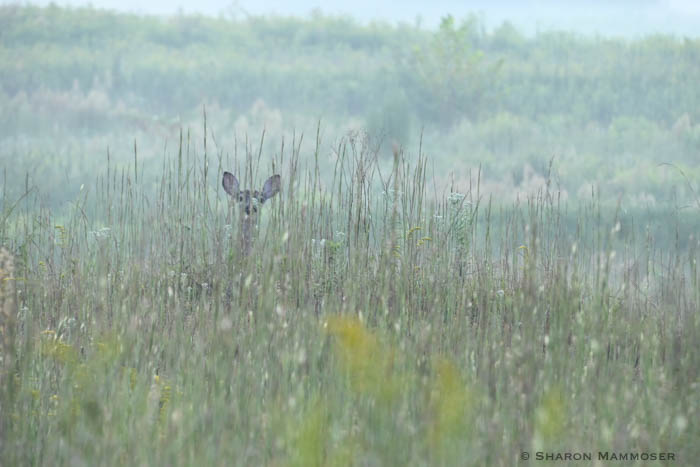
What are your thoughts? What should I add about deer do you think? Have you ever come across a sleeping or hiding fawn on the forest floor? As always, I’d love to hear from you! Please use the reply box below the post. Thanks for reading!
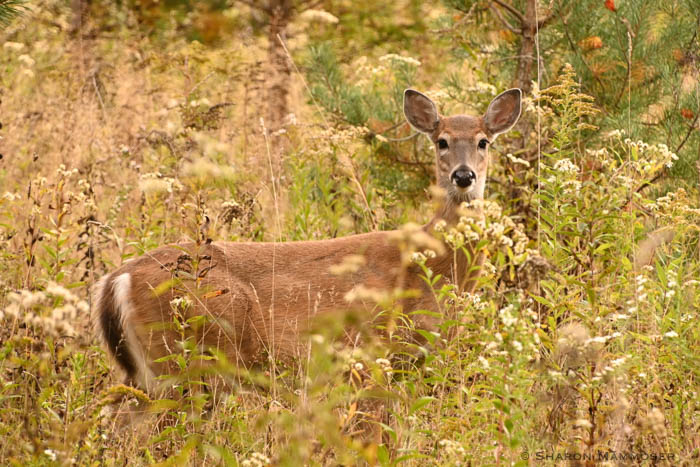

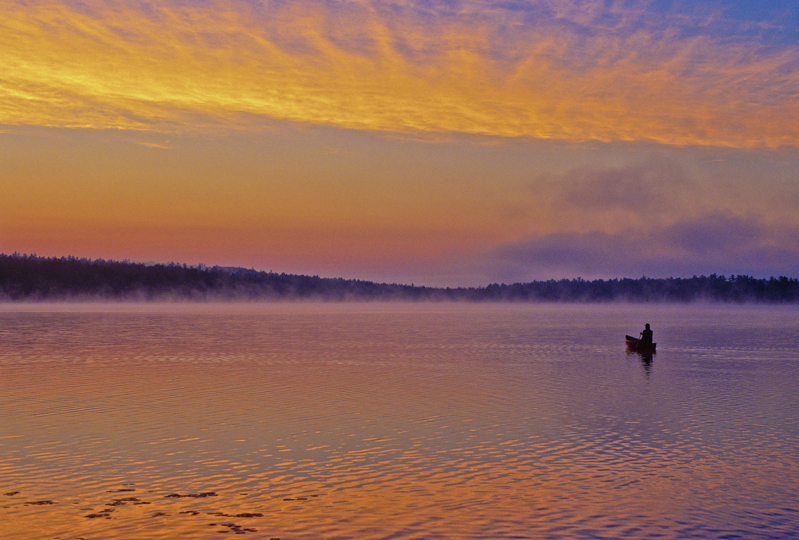
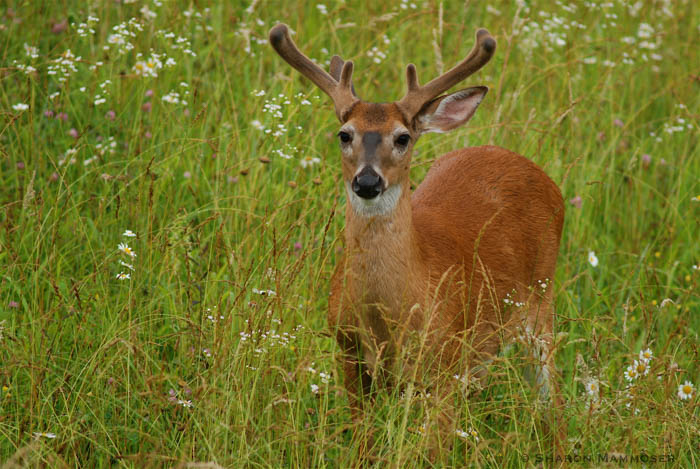
Do deer populations rise and fall based on availability of food and crowding? Hunters often justify their hobby by saying that they are preventing over crowding.
Yes, deer populations do fluctuate based on the quality and quantity of food and other resources in their habitat. For instance, mothers may give birth to twins rather than one fawn if the conditions are favorable or, if there is a lack of food, may absorb their embryos and not give birth at all that year. Historically large predators like wolves and mountain lions helped control the populations and those are now missing in many parts of the United State. However, the biological carrying capacity of any habitat always prevails. That is, if the basic needs aren’t met, the population will decline. The old, weak and sick would die first, leaving the strong and young, thus making the population healthier in the long run. These truths however will never convince many, many people, hunters and non-hunters who firmly believe that hunting is a necessary evil to keep populations in check. The reality is that much is happening “behind the scenes” so to speak that is contributing to an artificial uptick in wild game populations. For instance, animal rights attorney and Director of Legal and Government Affairs for the Animal Protection League of New Jersey writes, “Hunters sometimes argue that if they were to stop hunting, the deer population would explode. This is a false argument, because if hunting were to stop, we would also stop the practices that increase the deer population. State wildlife management agencies artificially boost the deer population in order to increase recreational hunting opportunities for hunters. By clearcutting forests, planting deer-preferred plants and requiring tenant farmers to leave a certain amount of their crops unharvested in order to feed the deer, the agencies are creating the edge habitat that is preferred by deer and also feeding the deer. If we stop hunting, we would also stop these tactics that increase the deer population.” …Thanks for reading and taking the time to comment. I appreciate you!